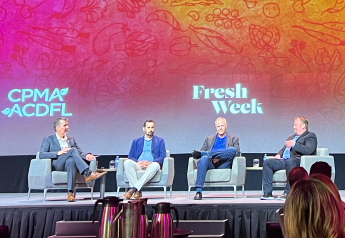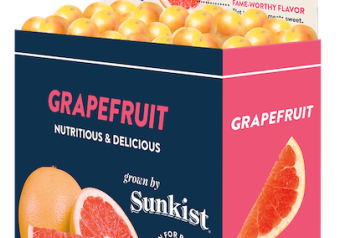Grower groups: Neonicotinoid draft biological evaluation does not reflect actual product use

Grower organizations representing a variety of crops are voicing disappointment with Environmental Protection Agency’s (EPA) Endangered Species Act (ESA)-required draft biological evaluation (BE) for several neonicotinoid products, including imidacloprid, thiamethoxam and clothianidin.
The groups representing farmers across the country say that the agency’s failure to consider real-world usage data in its analysis could limit growers’ ability to protect their crops and livelihoods – without making endangered species any safer.
American Farm Bureau Federation, American Soybean Association, National Cotton Council and Minor Crop Farmer Alliance say ESA analyses are, by law, required to “use the best scientific and commercial data available” to ensure endangered species and their habitats will not be adversely affected by an agency’s action. The groups point out the draft BE does not use the “best available data” and cite multiple examples of assumptions made in the EPA assessment that do not align with growers’ real use of neonicotinoid products:
• The draft BE assumes U.S. soybean farmers apply imidacloprid at 0.50 pounds per acre, the annual maximum rate allowed by law. However, USDA Agricultural Resource Management Survey (ARMS) data indicates that, in 2018, soybean growers applied an annual average of only 0.054 pounds per acre – less than one-ninth the draft BE’s assumed rate.
• The draft BE assumes U.S. cotton farmers apply the annual maximum of 0.125 pounds per acre of thiamethoxam. However, 2010-2014 market research data used by EPA to conduct its thiamethoxam benefits review shows that cotton farmers actually use an annual average of 0.037 pounds per acre – less than one-third the draft BE’s assumed rate.
• The draft BE assumes U.S. soybean farmers make extensive foliar spray applications of neonicotinoids. However, USDA declined to release the breakdown for foliar applications compared with lower-risk seed treatments in its ARMS survey: In 2018, there were fewer than five total foliar applications of all three chemistries reported nationally, which fails to meet the threshold to allow for survey data release.
Kevin Scott, soybean farmer from South Dakota and president of the American Soybean Association, says the draft BE compares proverbial apples to oranges: “USDA survey and commercial use data are available and show how growers actually use these tools, but the draft BE instead includes application rates, numbers, types, and reapplication timing for these neonicotinoid products that are remarkably inconsistent with the actual, available data. These erroneous assumptions could have real, negative consequences for farmers and other end users if they are used for the final ESA analysis.”
American Farm Bureau Federation President Zippy Duvall said, “We are disappointed that the Environmental Protection Agency failed to use the most accurate data in the draft biological evaluation. Farmers are judicious in their use of pesticides. EPA overstates the quantities used and therefore overestimates the impact on species. The Environmental Protection Agency should always utilize the most accurate data, especially when making decisions that could affect farmers’ access to important crop protection tools.”
Stephen Logan, a Louisiana cotton producer who serves as chairman of the National Cotton Council’s Environmental Task Force, said, “EPA’s current ESA compliance process is more like a ‘what-if’ scenario rather than use of best science and data. It’s a legislative conflict that no longer questions whether EPA will be sued but how soon EPA will be sued. EPA’s current compliance process seems to suggest that science and data are being dismissed due to frustration over continuous lawsuits. Meanwhile, farmers—not big companies—are the ones being economically affected. We have to rely on fewer options that often are more expensive and less effective.”
EPA’s overly cautious assumptions have led to significant inflation in the number of species receiving a “likely to adversely affect” designation. This could result in greater and unnecessary restrictions for products, which will do nothing to help species and only impede use of tools farmers rely on to sustainably grow a healthy and nutritious product.
Farmers are using new technology and practices every day to better manage their fields and protect wildlife. For example, farmers regularly use neonicotinoids and other crop protection tools as seed treatments, which can reduce soil surface exposure area by more than 99% compared with surface treatments—thus reducing risks to wildlife. Growers also seek participation in conservation programs and alliances such as the BeSure! Program and the Monarch Collaborative that aim to 1. improve policy 2. spread awareness of best-use stewardship practices for protecting species health and managing responsible product use.
The grower groups will continue to review the draft BE and participate in the public comment period to encourage use of best available scientific and commercial data in the final BE







